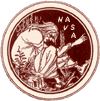The editorial board for Neo-Victorian Studies invite contributions on the theme of Neo-Victorian
Humour for the fifth volume in Rodopi’s Neo-Victorian Series, to be
published in 2015. This edited collection will examine the manifold modes,
functions, and implications of humour across neo-Victorian media,
such as literature, film, anime, graphic novels, videogames, visual art,
performance and lifestyle (e.g. steampunk). The volume will explore
neo-Victorianism in the light of contemporary aesthetics as the art of indirect
speech, what Umberto Eco famously described as “accept[ing] the
challenge of the past, of the already said” to “consciously and with pleasure
play the game of irony” (Reflections on The Name of the Rose, 1994) –
but also to engage in more aggressive games of parody, aesthetic travesty,
confrontation and denunciation. The omnipresence of a humorous awareness tends
to insist on a crucial difference and distance between neo-Victorianism and its
nineteenth-century referent, thus seemingly arguing against a nostalgic stance.
Yet humorous devices can also be employed to recycle invidious ideologies (e.g.
racism, imperialism, classism, sexism) under the politically correct guise of
comical debunking or subversion, even to the point of carrying forward a
pro-nostalgic agenda. From a technical point of view, humour also
implies the establishment of a complicity with the audience, involving
readers/viewers in complex games that may finally have less bearing on the
diegetic world than on the textual, intertextual and metatextual
nineteenth-century worlds being re-imagined. We encourage chapters to
investigate the inherent contradictions of neo-Victorian humour’s aims and
effects, both as a means of self-consciously creative experimentation and
adaptation of historical events, figures, and artifacts and as a self-defeating
nihilistic or anti-historical project. Possible topics may include, but
need not be limited to the following:
- humour’s shaping of contemporary views of ‘the Victorian’ and the long nineteenth century
- the postmodern features and implications of neo-Victorian humour
- the technical distancing devices of neo-Victorian humour: anachronism, parody, comedy, irony, structural counterpoint, double or multiple narratives, mise en abyme, and all forms of metatextuality
- comic modes, audience complicity, and resistance
- neo-Victorian humour and the Gothic
- the politicisation of neo-Victorian humour
- neo-Victorian humour, empathy, and its limits
- comic innovation and the principle of ironic reprise
- the role of playfulness and narrative games
- ethical and non-ethical humour in neo-Victorianism
- humour’s functions within and across neo-Victorian genres and media
- neo-Victorian humour and trauma
- the principle of humour in adaptations and adaptive practice
- neo-Victorianism, symbolic justice, and having the last laugh
Please send 300-500 word proposals (for 8,000-10,000 word
chapters) by 28 February 2014 to the series editors, Marie-Luise
Kohlke and Christian Gutleben (m.l.kohlke@swansea.ac.uk and Christian.GUTLEBEN@unice.fr).
Please add a short biographical note
in the body of your email. Completed chapters will be due by 1
September 2014.




